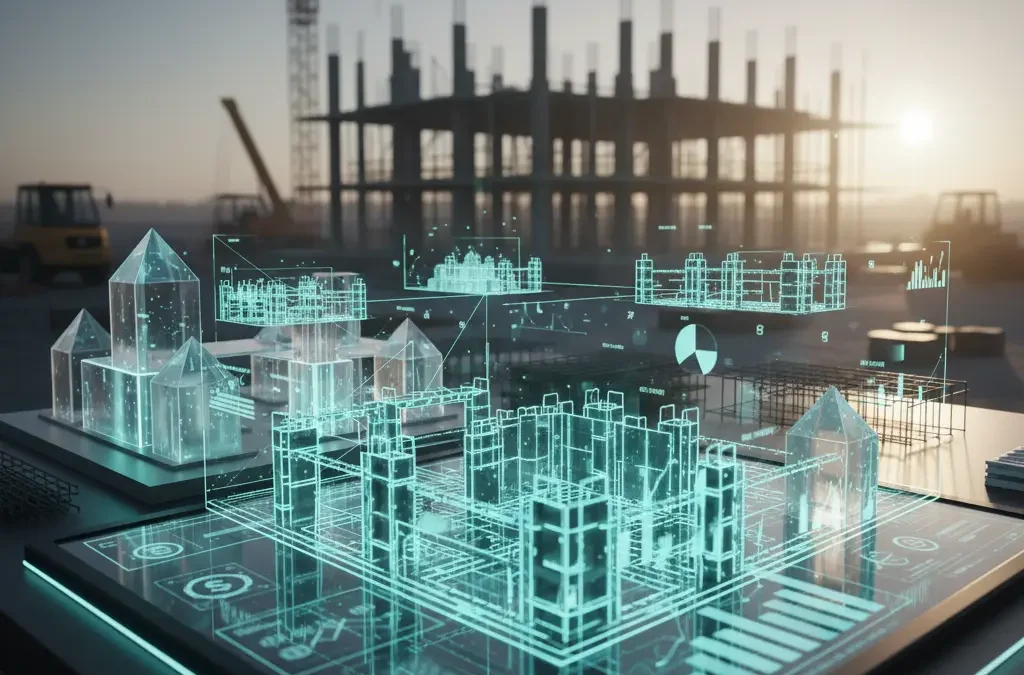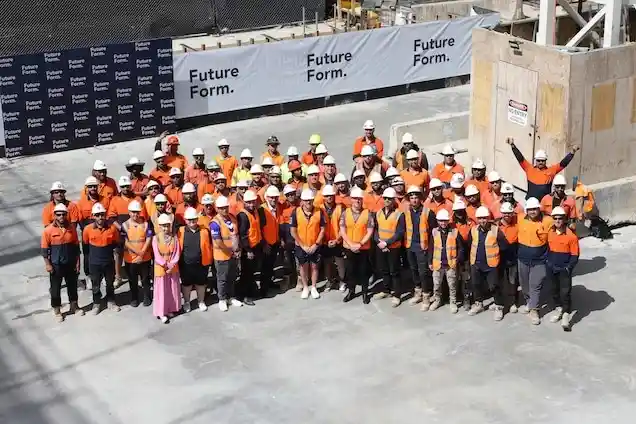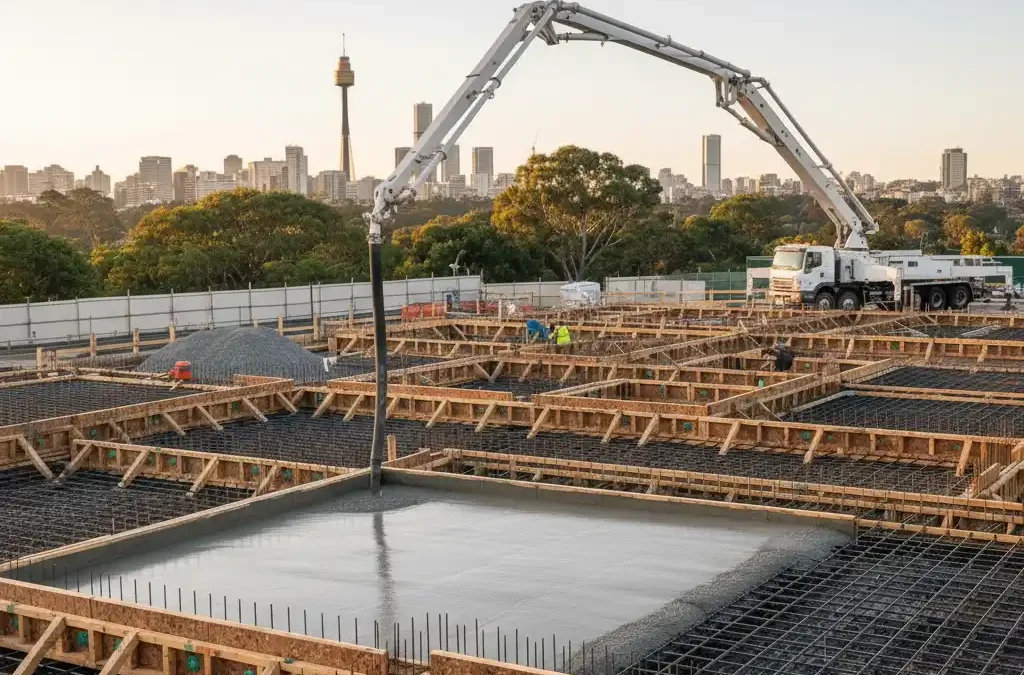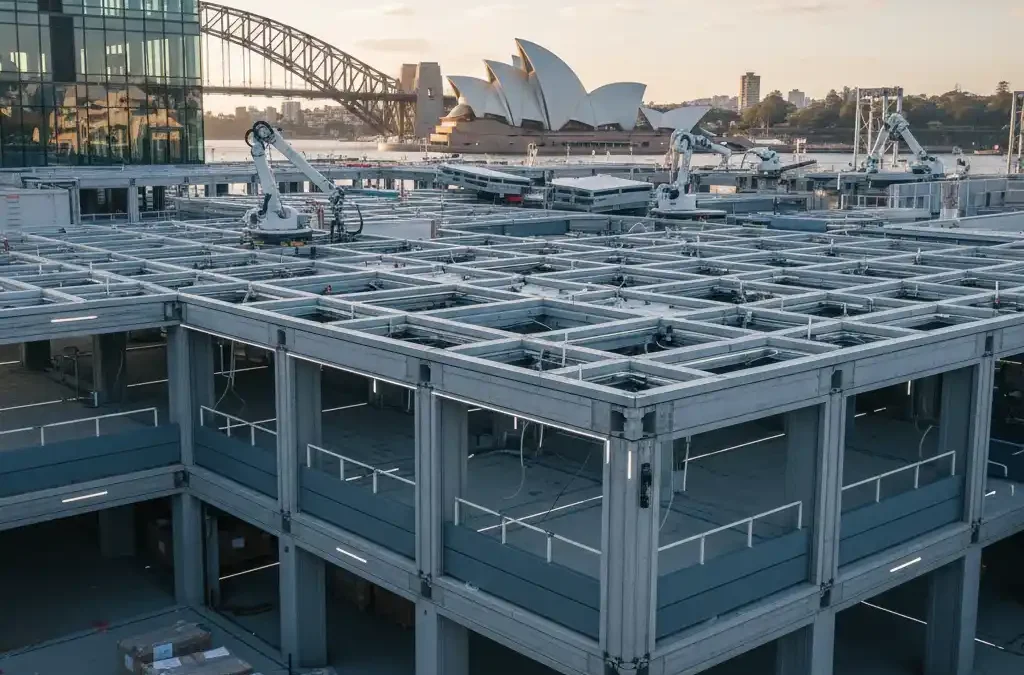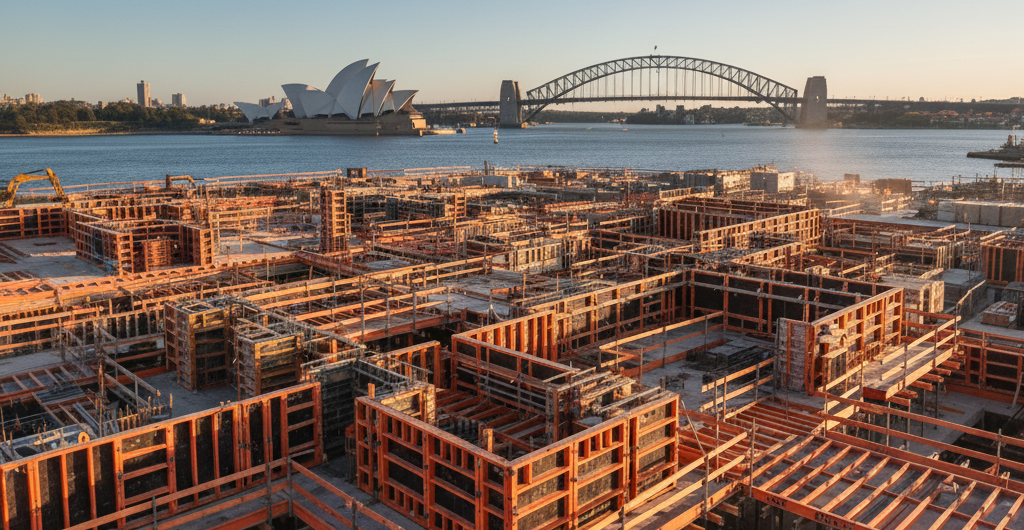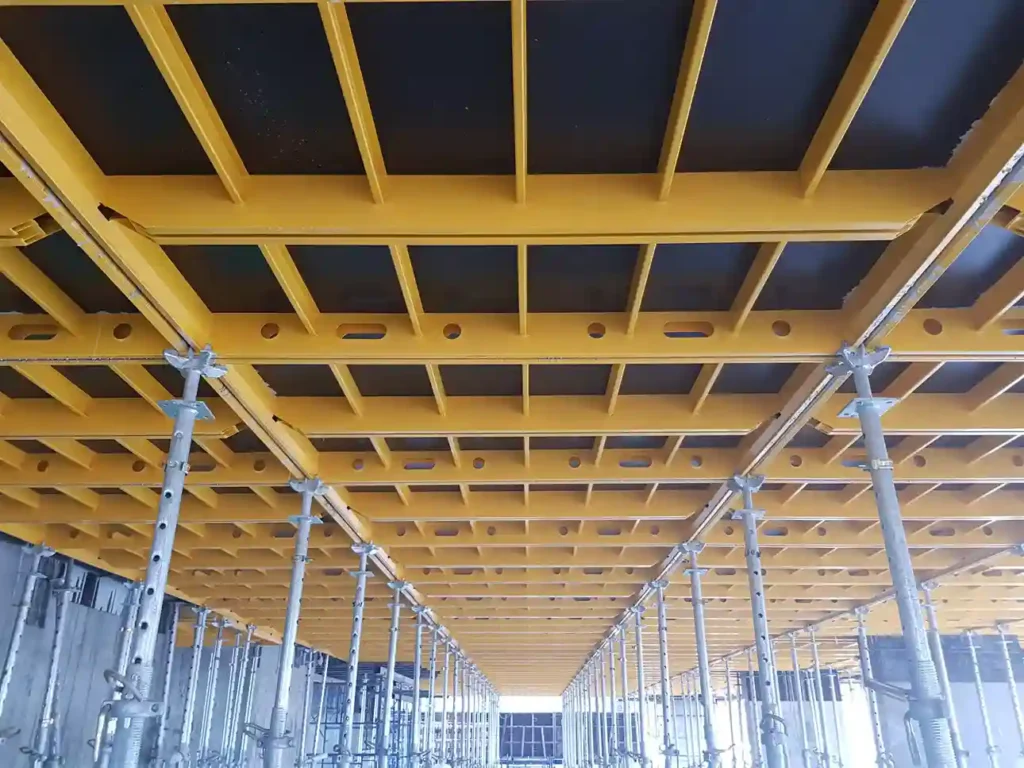
The construction world is no stranger to complexity—whether it’s managing timelines, coordinating subcontractors, or keeping costs under control, the struggle is real. But what if we told you that some of the most complicated projects today are being delivered faster, safer, and with greater design precision—using something that works a bit like Lego?
Welcome to the world of modular formwork. This isn’t just a buzzword—it’s a game-changer, transforming the way developers, construction professionals, industry partners, and clients bring their visionary projects to life. At Future Form, we’ve seen firsthand how modular systems can simplify once-daunting builds into precise, repeatable processes with smart formwork solutions Sydney developers trust.
Let’s explore how this positive shift is turning complexity into simplicity—and why the future of construction in Australia might just look a bit like your childhood toy box.
The Problem with “Traditional” Construction
Time is money in construction, especially in Australia’s fast-moving property and infrastructure sectors. From the skyscrapers of Sydney to the multi-residential developments in Canberra, developers are constantly under pressure to reduce delays, stick to budgets, and navigate labour shortages.
But conventional formwork methods often bring inefficiencies:
- High labour demands: Traditional systems require intensive manual setup and breakdown.
- Complex logistics: Managing materials across busy sites adds risk and delays.
- Inconsistent outcomes: Human error can lead to irregular finishes and costly rework.
- Waste and sustainability challenges: Non-reusable materials contribute to site waste and environmental issues.
In an era where efficiency and environmental accountability matter more than ever, developers are searching for smarter alternatives. That’s where modular formwork comes in.
What Is Modular Formwork?
Think of modular formwork as a custom-fit system made up of pre-engineered, prefabricated components that lock together with precision. Like Lego, these parts are reusable, interchangeable, and designed to make building quicker and simpler.
Whether it’s panels for vertical columns, slab systems for suspended floors, or customised moulds for curved façades—modular formwork can adapt to your design without the need for on-site improvisation.
But the real power lies in the predictability: every piece is manufactured under controlled conditions, quality-checked, and delivered ready to install.
The Benefits: Why Modular Formwork Works
Let’s break down why modular formwork is fast becoming the preferred method for builders and developers across countries:
Speed and Efficiency
Pre-fabricated systems mean faster setup and dismantling. One of our Sydney-based clients reported a 35% reduction in overall pour cycle times using Future Form systems—a massive boost to their timeline and profitability.
Precision and Repeatability
Every form is manufactured to exact specifications, which means fewer errors, smoother finishes, and less rework. For complex structures like lift cores or cantilevered balconies, this is invaluable.
Sustainability
Unlike timber or single-use moulds, modular formwork is built to last. Our aluminium systems, for example, can be reused up to 100 times, significantly reducing construction waste. This aligns perfectly with Australia’s growing commitment to green building certifications like Green Star and NABERS.
Safety First
Modular systems are engineered with safety in mind—lighter materials, fewer loose components, and streamlined installation reduce manual handling and on-site risk.
Cost Control
Faster build times and fewer errors equal lower labour costs and reduced material wastage. And since modular formwork is reusable, you get a better ROI on your formwork spend over the long term.
The Context: Why It’s Growing Here
Some developed countries have always been a frontier for construction innovation, and modular formwork is no exception. With ongoing urban expansion in cities like Sydney, Canberra, Brisbane, Perth, and Adelaide—and a renewed focus on infrastructure following government stimulus packages—efficiency is everything.
But we’re also seeing some Australia-specific challenges that modular systems help solve:
- Regional construction needs: Prefabricated formwork can be transported and deployed easily for remote builds, such as mining accommodation or rural health centres.
- Skilled labour shortages: With skilled trades in short supply, modular systems reduce reliance on highly specialised workers.
- Weather unpredictability: Systems that are quick to assemble reduce the risk of weather-related delays—especially during storm-prone seasons in QLD and NSW.
Solving Big Builds, the Smart Way
The construction landscape isn’t just vast—it’s varied. From dense urban developments to sprawling regional projects, each site comes with its own set of challenges. That’s why modular formwork needs more than clever design; it needs a local touch. At Future Form, we understand the demands of building in Australia—weather unpredictability, remote access, and compliance with strict standards—and we’ve designed our systems to meet them all head-on.
At Future Form, our teams don’t just sell formwork—we engineer solutions tailored to your project vision. Our services are designed with flexibility, transportability, and on-site practicality in mind.
Tailored Design Support
We work with your architects and engineers to ensure each panel, mould, and structural system suits the design intent—whether that’s modular apartments, aged care homes, or high-rises.
Australian-Made Commitment
Our systems are designed and produced locally, ensuring fast turnaround and compliance with Australian Standards (AS/NZS). This not only boosts jobs but ensures adaptability to local building codes.
End-to-End Collaboration
From early-stage planning to on-site delivery and post-project support, our team becomes an extension of yours. We work closely with developers, contractors, and consultants to avoid roadblocks before they happen.
Real-World Results: Projects That Click
Let’s take a moment to look at how Future Form’s modular systems have transformed ambitious designs into successful developments—on time, on budget, and with outstanding precision.
The Langston, Epping NSW
This landmark mixed-use development in Epping demanded a solution that could keep up with its multi-stage complexity and tight urban constraints. With Future Form’s modular vertical and slab systems in play, our team supported a seamless flow of construction across three towers—up to 29 storeys high. The results? Efficient core and slab cycles, reduced formwork labour, and consistent finishes across residential and commercial levels. The project now stands as a bold example of what’s possible with smart modular strategies in high-density zones.
50 First Avenue, Maroochydore QLD
On Queensland’s Sunshine Coast, this premium residential project showcased how modular formwork can shine even in coastal conditions. With curved balconies, architectural detailing, and tight staging schedules, the build required flexibility without compromising quality. Future Form’s tailored systems enabled rapid progression floor-by-floor, helping the construction team maintain pace while delivering crisp structural finishes. For developers, this meant more predictable timelines—and more time to focus on interior fit-outs and sales strategy.
These are more than just efficient builds—they’re proof that modular formwork delivers results where it counts: faster structures, fewer headaches, and long-term gains for developers, builders, and clients alike.
The Future Is Clickable: Building Smarter Starts Now
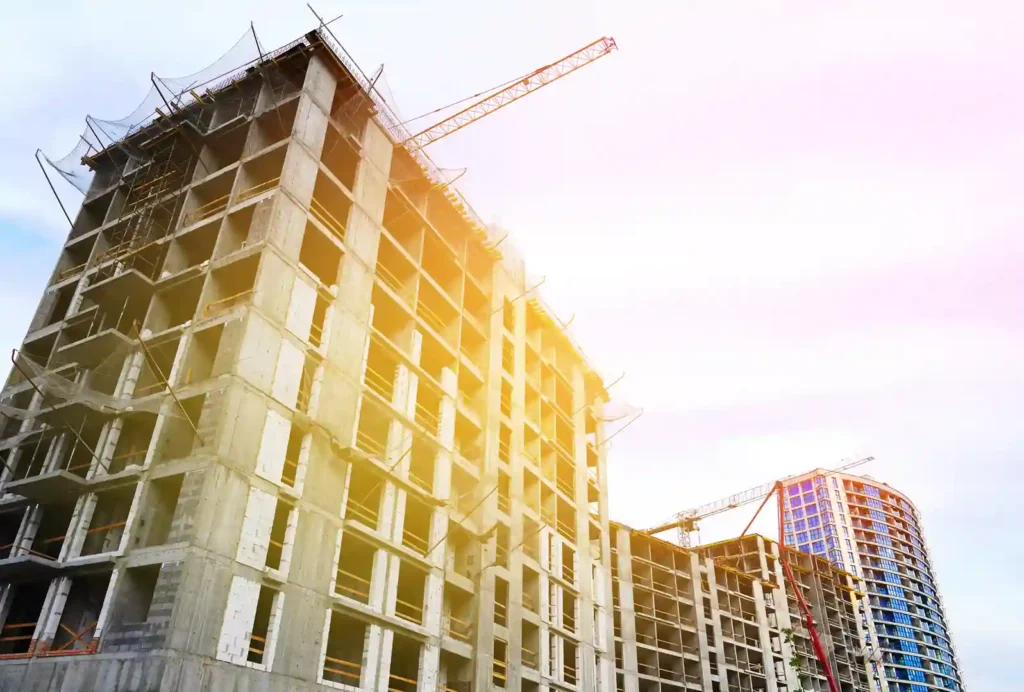
As the construction industry pushes toward faster, safer, and more sustainable delivery, modular formwork is proving it’s not just a fleeting trend—it’s the foundation of a smarter way to build. From government housing initiatives to private developments, the shift toward prefab and modular formwork solutions Sydney reflects a growing demand for methods that reduce complexity without compromising quality. It’s no longer about whether to adopt modular—it’s about how soon you can make the switch.
At Future Form, we see every project as an opportunity to do better. With our modular formwork systems, we’re not only simplifying complex site challenges—we’re enabling bold ideas to rise, floor by floor, without the usual headaches. Whether you’re developing your next high-rise or planning a major infrastructure piece, we’re here to support you with systems designed for speed, strength, and success. Let’s redefine what’s possible—together.
References
Australian Government. (2024). Green Star certification for sustainable buildings. Retrieved from https://www.infrastructure.gov.au
Construction Skills Queensland. (2023). Labour Market Outlook. Retrieved from https://www.csq.org.au

